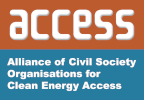Risk Coverage - Hydropower Development
Every infrastructure development entails a range of uncertainties and risks, some inherent in the nature of the development undertaken and others resulting from the manner in which the development is carried out and financed. Risks increase with procedural remoteness from the project; they can be better contained if the development remains in public hands than they can be where a private developer or investor has to interface with the public sector.
Hydropower development is, on the whole, not considered to be a speculative venture so that risks are to some extent offset by the normally long-term stability of the energy resource.
Risks can be classified under:
- common risks shared equally between the public and the private sector and depending largely on the nature of the development, and
- interface risks specific to a private developer working with or licensed by the public hand
COMMON RISKS
Project preparation
Water availability
First among the risks facing whoever promotes and ultimately owns the scheme are those involved in the conception of the project. The greatest risk in the hydro case concerns water availability. Water resources for small schemes have usually been only cursorily surveyed; flow measurements have extended over only a short period of time and may not have captured multi-annual cycles. Even longer-term records offer no assurance that the hydrology will not change, often drastically, cyclically or even permanently. Network interconnections or standby diesel plant may offer some relief from critical power shortage - at extra cost. Stand-alone schemes may suffer greatly and furnish an unreliable supply. Economic appraisals of the merit of a given scheme have to take such eventualities into account and provide an appropriate justification for whatever standby arrangements may be considered necessary. Supply interruption leading to appreciable amounts of unserved energy can be very costly for both supplier and consumer.
Surface and subsoil conditions and seismicity
Risks associated with surface and subsoil conditions and seismicity should likewise be fully evaluated in the planning stages of a project but, here again, shortage of development funds may have led to shortcuts in project preparation, at the price of sometimes greatly increased civil engineering effort during construction and corresponding cost overruns. Although small schemes are perhaps less sensitive to subsoil conditions and local strengthening can often be readily accomplished, major mistakes have been made and major cost overruns experienced.
Market-related risk
Many schemes, especially stand-alone plants, have to face a market-related risk. Even in cases where a careful market survey has been carried out, there may be uncertainty on:
- the availability of an effective transmission interconnection with the network of the load centres;
- the precise extent of the potential market;
- the development of the market once energy becomes more freely available;
- the price-demand resilience of the consumers which will be experienced when electricity is sold on commercial terms.
Unless there is room for water storage, hydro generation will be rigidly run-off dependent and offers little scope for adaptation to market requirements or for expansion of energy production. There is then danger of an ultimate mis-match of demand and production characteristics which may result in inadequate revenue recovery and unsatisfactory financial performance.
Construction
Inappropriate or faulty design
Risks of inappropriate or faulty design can arise where there is an interface and split responsibility between the designer and the constructor or where scarcity of funds has caused site investigations to be cut short. The risk can be contained through performance guarantees if the constructor is made responsible for the final design. Design problems are exacerbated if lack of funds causes the monitoring and supervisory activities during construction to be curtailed although construction funds may be held back unless funding agencies and investors are satisfied that the design is sound and the anticipated performance is likely to be achieved. The turnkey (design-construct) approach may offer some remedy since interfaces do not occur during the development process and only a single main contractor remains responsible throughout. He will be subject to output and performance guarantees as well as completion penalties.
Construction cost overruns and delays in completion
The same arrangement will help to overcome the risks of construction cost overruns and delays in completion. The comparative complexity of hydro construction makes such schemes prone to slippage during construction. Slippage is not necessarily related to the scale of the work and quite small projects can suffer from the complex interrelation between different activities in the construction phase. The risk is greatest where the proportion of imports is large and where the site is remote. Difficulties and delays are also often encountered at the points of importation of foreign goods and equipment but these can often be overcome if governments are prepared to facilitate importation. If government help is not effective, turnkey and other contractors may claim force majeure and renege on their guarantees.
Force majeure risk
There is thus a force majeure risk which has to be evaluated when a turnkey contract is placed; contractors may wish to pitch contract terms fairly widely whereas the developer and his financial backers will naturally wish the terms to be well constrained. It has also to be recognized that force majeure may be claimed by contractors for any delays incurred which are not under their control, for example delays due to:
- faulty or inaccurate specifications;retarded approvals from whatever public authority may be involved;
- ineffective site management and coordination between non-turnkey contractors;
- construction problems arising from inadequate site data and faulty surveys;
- difficulties with locally contracted labour;
- obstruction from local interest groups due to environmental sensitivities;
- true 'force majeure' due to civil or military disturbance or to adverse natural events (floods, storms, earthquakes).
A turnkey contract does not therefore offer complete protection against delays in completion and cost overruns. Insurance cover may be needed in some cases. Although turnkey contracts are often quoted as being of "fixed price" - indeed this is one of the advantages commonly attributed to turnkey deals - contractors frequently submit supplementary claims by way of contract price adjustment (CPA) on account of:
- changes in design or specification for which they are not responsible,
- unforeseen or unforeseeable problems arising during the construction phase,
- delays experienced which are outside their control.



















